Robert Kahn: Chamber Music, Volume One
Robert Kahn, born in Mannheim in 1865, produced a large body of gloriously attractive chamber music, expertly crafted and basically Brahmsian in style. His three violin sonatas, written over a twenty-year-period at the end of the nineteenth and beginning of the twentieth centuries, reveal a lyrical composer in the Romantic mainstream but capable of considerable formal inventiveness.
Julia Bushkova, violin; Arsentiy Kharitonov, piano
Listen To This Recording:
-
Violin Sonata No. 1 in G minor, Op. 5
- Allegro moderato e energico
- Adagio ma non troppo
- Allegro vivace
- Allegro
- Adagio ma non troppo
- Allegro non troppo, ma con fuoco e poco a capriccio
- Andante sostenuto – Presto
- Allegro molto vivace
- Adagio
Violin Sonata No. 2 in A minor, Op. 26
Violin Sonata No. 3 in E major, Op. 50
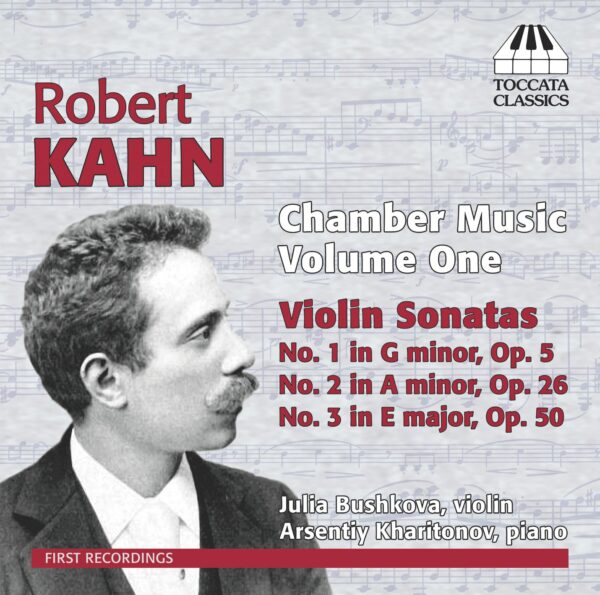
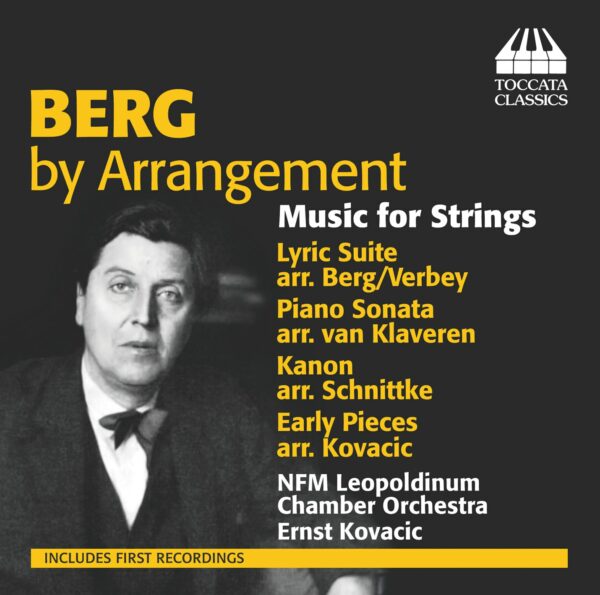
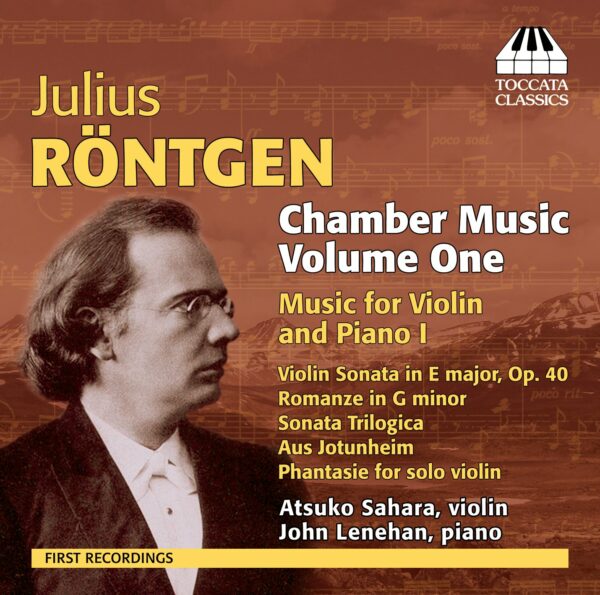
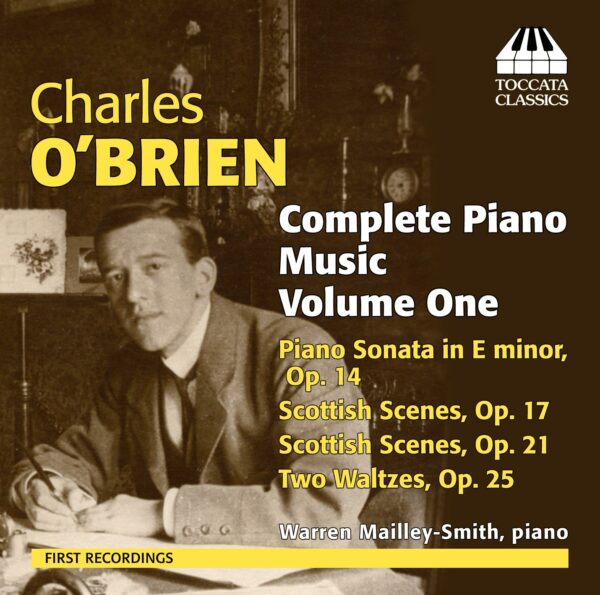
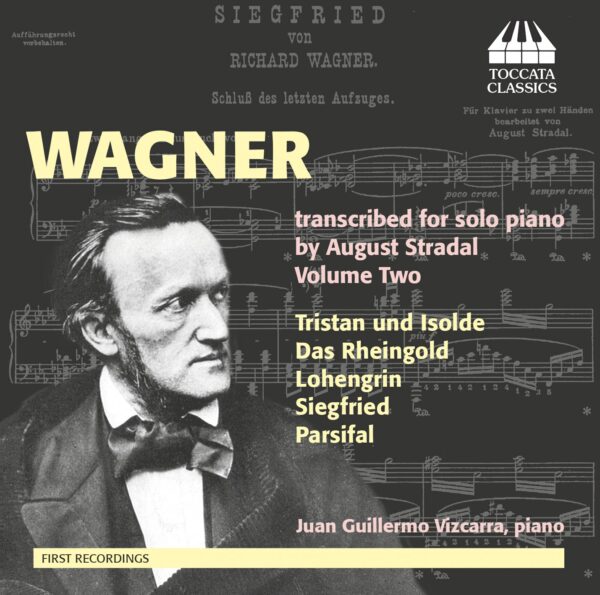
MusicWeb International :
‘… While some other contemporary composers who deliberately kept on the ‘safe’ route were sometimes let down by the quality of the musical invention itself or their ability to demonstrate real spontaneous development, Kahn’s chamber output isn’t similarly blighted. His Sonata No. 1 in G minor … is one of the first of his larger works that clearly evidences his ability to combine the three-movement structure of a Romantic sonata with the spirit and inventiveness typical of a young virtuoso. … The brisk finale, as energetic as it is scholarly, demonstrates that Kahn was prepared and able to look beyond the purely Brahmsian late-Romanticism that had been a major influence on the composer’s music. … Irrespective, the Second Sonata picks up where the First Sonata leaves off, and is just as passionate; more so even, than its predecessor of some ten years earlier. … This led to the composition of an important masterpiece among his chamber compositions – the Sonata No. 3 in E major… Unlike the first two examples, the Third Sonata also sees Kahn experimenting more with formal construction, rather than tweaking his musical language as might befit the early years of the twentieth century. He take the less usual step of starting with a slow movement, that here precedes a brisk ‘presto’… Rather like wine, you really need a keen nose to sort the wheat from the chaff, and, once again Toccata Classics has come up with a winner in Robert Kahn, and his Three Violin Sonatas. If the first two don’t hook you straightaway, then the tremendous Third Sonata should finally reel you in, now, perhaps, an emerging Kahn aficionado. The playing and recording are absolutely first-rate. Steffen Fahl’s sleeve-notes erudite and most informative…’
—Philip R Buttall, MusicWeb International
Fanfare Magazine :
‘The presence of Brahms, Schumann, and Mendelssohn weighs heavily on the First Violin Sonata of 21-year-old Robert Kahn, and their influence is still evident 10 years later in the Violin Sonata No. 2. However, after the passage of another 10 years, a Third Sonata reveals the composer’s own authentic voice, and this voice is truly, remarkably beautiful. The melodic material is of a superior quality, the structure of all three movements superb, and the meaning it carries profound. … The composer could not ask for two more ideal advocates than Julia Bushkova and Arsentiy Kharitonov. … In fact, Kharitonov’s sumptuous tone, technical mastery, broad dramatic range, and elegant phrasing places him in the top ranks of keyboard players today. Above this, and trumping some of the more prominent musical gymnasts of the day, there is genuine poetry here, the ring of truth, and, it seems to me, a rare sincerity issuing from a deep place in the pianist’s heart. … His partner, Julia Bushkova, like Szeryng, displays a less urgent dramatic quality, a more slender, and less malleable tone, but the same graceful phrasing and meticulous musicianship.
The sound engineering lends a sonorous presence and warmth to this important musical production. One also feels compelled to thank whoever is responsible for the wonderful piano used at the sessions.’
—Raymond Beegle, Fanfare Magazine, September 2015
Daily Classical Music :
‘… What made Robert Kahn different from other composers of his day was his strong desire to write music for small forces that was unpretentious and yet highly appealing. His use of melody, harmony and form is strongly creative and original in itself, but his many songs, chamber and piano music remain largely unexplored. This is particularly true of the three Violin Sonatas composed in 1886, 1897 and 1907 respectively. … As is the case with all his chamber output, the Sonatas benefit from some truly exquisite melodic inventions enmeshed in a framework of passion, warmth and charm, and although each piece has its own characteristic flavour, the music is a consistent reminder of Kahn’s consummate craftsmanship and flawless technique. No wonder Brahms was so enthusiastic about the first Sonata. … Both performers are zealous advocates of Kahn’s cause, and their renditions have all the verve and vigour of a late romantic writing at his inventive best. … This is glorious material that deserves a much wider exposure than it has had so far. Notes and sound are first-rate.’
—Gerald Fenech, Daily Classical Music, August 2015
Fanfare Magazine :
‘Kahn later recalled that Brahms, who on occasions acted as page-turner for Kahn, purred like a cat during each movement as he listened to the music.” As those who knew him well would testify, getting Brahms to purr at anything was no mean feat.
That particular Sonata—the one in G Minor, finished when Kahn was only 21—is a work of astonishing ease and assurance, with a second theme in opening movement so meltingly beautiful that even Wagner might have purred. […]
Impulsive and meticulous by turns, the Russian-born Julia Bushkova and the award-winning Arsentiy Kharitonov […] seem ideal advocates of this utterly captivating music, constantly creating the impression they just can’t wait to share their next exciting discovery, found—more often than not—in the very next bar. […] a triumphantly unqualified winner [album].’
—Jim Svejda, Fanfare Magazine, September/October 2015
Fanfare Magazine :
‘A large-scale work [G-Minor Sonata, op. 5], its pages are filled with bold gestures and virtuosic opportunities for the violin, but also with much soulful song. A Kahn biographer noted that Brahms “purred like a cat during each movement as he listened to the music,” and Clara Schumann wrote in her diary how much she enjoyed playing Kahn’s G-Minor Sonata with violinist Nuret Koning on October 5, 1886. […]
I can’t imagine [these works] being played with any greater technical proficiency, beauty of tone, or feeling for the music than is evidenced in these rapt and rapturous performances by Julia Bushkova and Arsentiy Kharitonov, two outstanding artists of Russian birth. […]
For three beautiful violin sonatas, beautifully played and recorded, strongly recommended. ‘
—Jerry Dubins, Fanfare Magazine, September/October 2015
Fanfare magazine :
‘[Kahn Sonata No.1] opens with a dramatic statement of an ambitious theme that alerts the listener to the importance of the piece. Shortly thereafter Bushkova’s violin expands the theme with beautifully expressed lyrical tones, while Kharitonov’s full-blooded piano playing continues to supply the rhythmic underpinning integral to Kahn’s music. The second movement, Adagio ma non troppo , leads listeners into the beauty of a salon where delicate emotions are better expressed in music than in words. Here, Bushkova and Kharitonov’s playing is positively bewitching. The finale, Allegro Vivace , is a positive and joyous piece of music. Bushkova and Kharitonov play it with the kind of total abandon that can only occur when virtuoso players are so used to playing together they seem to breathe as one.
Bushkova and Kharitonov play [Sonata No.2′ virtuous music] music as though it is a “walk in the park.” Actually, they are asked to play unusually ingenious lines that expand the boundaries of the Romantic style, and they do so with consummate grace and exquisite tone quality.
Sonata [No.3] begins with a feeling of sadness that Bushkova and Kharitonov play with great poignancy. T[…]. The sound is well engineered and makes the listener feel the ambiance of a small chamber music hall. These sonatas are a fabulous discovery and deserve to be widely heard. What a delight it must have been to record these masterpieces for the first time! Readers who love Romanticism will not want to miss the music on this disc.’
—Maria Nockin, Fanfare magazine, September/October 2015
Classical Lost and Found :
‘Toccata Classics continues their unearthing of long since buried musical treasures with this worthy addition to the recordings of chamber works by German composer Robert Kahn. […]
[The first violin sonata is an] amazing work for a twenty-one-year-old, when Brahms heard it shortly after its completion, he was so impressed he invited Robert to Vienna for private lessons. […]
Both Russian-born and trained, violinist Julia Bushkova and pianist Arsentiy Kharitonov give us good accounts of these forgotten scores.’
—Bob McQuiston, Classical Lost and Found